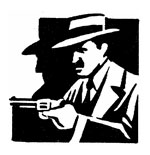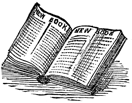
Assassination Nation
NEW OXFORD NOTEBOOK
“The West won the world not by the superiority of its ideas or values or religion…but rather by its superiority in applying organized violence.” ― Samuel P. Huntington, The Clash of Civilizations and the Remaking of World Order
The history of the United States reads like a timeline of violence. It’s a nation that was born in violence (Revolutionary War), secured by violence (War of 1812), preserved by violence (Civil War), and expanded by violence (Mexican-American War, Spanish-American War, and the American Indian Wars). Throughout the 20th and 21st centuries, the United States has brought its expertise in violence to bear on the world at large (World War I, World War II, the Korean War, the Vietnam War, the Gulf War, the War in Afghanistan, and the Iraq War, not to mention numerous brushfire conflicts, gun-running ops, and personnel training here, there, and everywhere, including two present proxy wars in Gaza and Ukraine).
American history classes are taught according to this very timeline, with attention allotted to exceptional periods “between the wars.” Such classes teach not only about “wars between countries, but wars declared on poverty, drugs, and crime. Even when we teach about the civil rights movement, we are not necessarily teaching about nonviolence, but an orchestrated response to violence,” writes Kellie Carter Jackson in Daedalus (Winter 2022).
We love our war heroes: George Washington, Alvin York, George Patton, Douglas MacArthur, James Doolittle, Audie Murphy, Desmond Doss, Chris Kyle, Marcus Luttrell — each has been immortalized not only in our history books but on the silver screen. And we love our outlaws, too. Their lore is just as lengthy and celebrated in academics and popular culture. The names of our favorites are etched in our national memory: Billy the Kid, Jesse James, Butch Cassidy, Black Bart, Doc Holliday, Machine Gun Kelly, Pretty Boy Floyd, John Dillinger, and Bonnie and Clyde. Heck, there was even a popular “outlaw” subgenre in country and western music. Perhaps you’ve heard of Waylon Jennings?
What do those in the foregoing lists of heroes and outlaws all have in common? They were all masters of violence. They all used violence to achieve a certain end: overwhelming defeat of their enemies. The primary thing that distinguishes the killers in the first group from those in the second is that the former were commissioned by the U.S. government. This, we believe, means they are due obeisance. We honor our commissioned killers, great and unremarkable, with three national holidays: Independence Day, Memorial Day, and Veterans’ Day.
You May Also Enjoy
Blood relationship is overrated, and natural relations are less important than ones that mirror supernatural relations.
The time is ripe to reconsider the trajectory of our nation, and how Catholics fit into it. To that end, we asked thinkers of different stripes four questions.
Most of us probably spend more time each day looking at screens than at anything, or anyone, else. Our thinking is curdled out of online scenarios.

